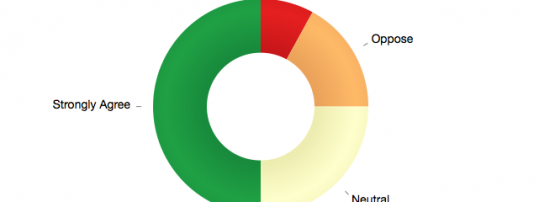
The APNIC Secretariat has been in consultation with the Policy SIG Chairs and the wider community about implementing a system to help create a more level playing field for remote participation in the APNIC Open Policy Meeting (OPM).
In the past, people participating remotely and those who don’t want to publicly demonstrate their support or opposition to a policy proposal, were able to express their opinion on the mailing list, or via live chat during the Policy SIG Meeting. There are some disadvantages to this compared to people attending the meeting in person.
While the SIG Chairs judge community consensus based on mailing list posts and the chat system, they sometimes find it difficult to gauge support for a proposal, even among the people in the room as many do not participate in the traditional “show of hands”.
After a series of consultations with the Policy SIG Chairs and SIG community members the Secretariat asked for feedback on a set of specifications for an electronic consensus measurement the tool during the APNIC 37 Policy SIG meeting.
Following this work, we decided a purpose-built system would be the best approach to meet community expectations, which might change after initial pilot and further experience with the system.
The Policy SIG Chairs hope this system will help them better gauge community consensus, and increase remote participation rates. Provisionally, the electronic consensus platform is being called CONFER (COmmuNity FEedback in Realtime).
While the Policy SIG Chairs support this initiative, there were some concerns raised during APNIC 37 and afterward on the mailing list.
In particular, some community members indicated that using such a systematic tool might replace the process of community consensus building with simple voting, or at least the appearance of voting.
- Consensus building is a process
The point was made very clearly that consensus should be a process of discussion on the mailing list and the meeting. The objective is general agreement among SIG members. Major and minor objections need to be raised, discussed, and resolved, if possible. This consensus process is documented in the APNIC Policy SIG Guidelines and by other Internet community consensus decision processes, such as the IETF.
Specifically, the APNIC SIG Guidelines talk about the “process of working together to create a proposal acceptable to all participants”. It is important to understand that the new system will not change the Policy Development Process in any way. It only replaces the ‘show of hands’ as described in the SIG Guidelines. The consensus process will not change with the use of CONFER.
To allow time to consider and discuss this, a community discussion about the process of consensus decision-making, led by Policy SIG Co-Chair Masato Yamanishi, is included in the APNIC 38 agenda.
Additionally, concerns were raised that the new system could result in less transparency and the possibility that somebody might misuse the system by participating multiple times and distort the results.
- Authentication and access
The prototype system being tested at APNIC 38 does not feature a strong verification and authentication system. While a strict authentication system would reduce the chance of fraud, it would make the system less open and accessible. So the decision to enforce verification and identification of individual participants needs to be balanced to maintain low barriers to participation.
For the pilot period, the Chair will call for consensus using the CONFER system in addition to a show-of-hands so he can compare the results of the CONFER system and the in-room participation.
The prototype system, built by APNICs Software Engineering team, is functional, but does not incorporate every feature envisioned in the user specifications that arose from the consultations.
If the pilot program is considered a success, feedback and experience from using the system will be incorporated into a completed first-generation system at APNIC 39 in Fukuoka, Japan.
All community members with an interest in APNIC Policy and the Policy Development Process are encouraged to participate in the CONFER pilot test during the Policy SIG sessions on Thursday, 18 September 2014.
More information and instructions for accessing and using the new system will be made available on the Policy page of the APNIC 38 website.
The views expressed by the authors of this blog are their own and do not necessarily reflect the views of APNIC. Please note a Code of Conduct applies to this blog.

Pingback: Welcome to APNIC 38 | APNIC Blog